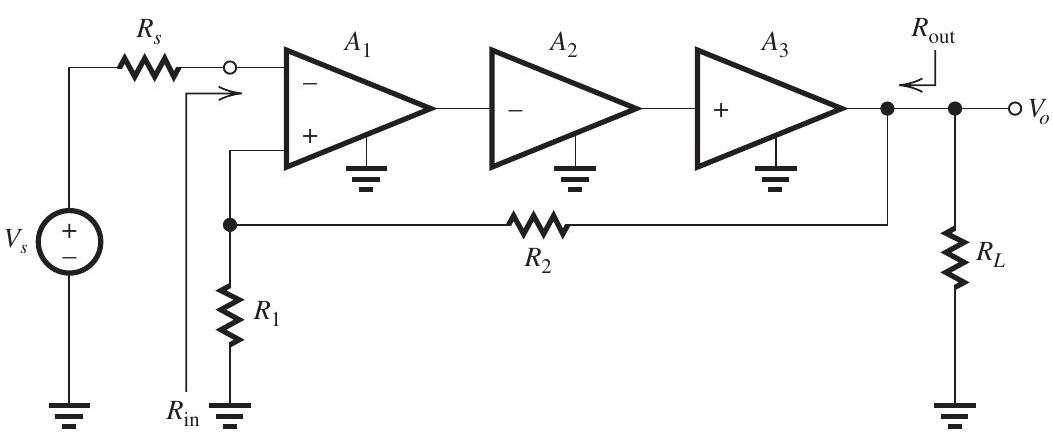Essay
Figure 11.6.1 (refer to Figure below)

Figure 11.6.1
shows a feedback voltage amplifier in which the basic amplifier is composed of three cascaded stages having the following characteristics:
has a differential input resistance of , an open-circuit differential voltage gain of , and an output resistance of .
has an input resistance of , a shortcircuit tranconductance of , and an output resistance of . has an input resistance of , an opencircuit voltage gain of unity, and an output resistance of .
The feedback amplifier is fed with a signal source having and is connected to a load . The feedback network has and .
(a) Give the circuit and find the value of .
(b) Find and the amount of feedback.
(c) Find the closed-loop gain .
(d) Find the input resistance .
(e) Find the output resistance .
(f) If the high-frequency response of the openloop gain is dominated by a pole at , what is the upper 3-dB frequency of the closed-loop gain?
(g) If for some reason the gain of drops to half its nominal value, what is the percentage change in ?
Correct Answer:

Verified
Correct Answer:
Verified
Q2: <img src="https://d2lvgg3v3hfg70.cloudfront.net/TBO1243/.jpg" alt="
Q3: <img src="https://d2lvgg3v3hfg70.cloudfront.net/TBO1243/.jpg" alt="
Q4: <img src="https://d2lvgg3v3hfg70.cloudfront.net/TBO1243/.jpg" alt="
Q5: <img src="https://d2lvgg3v3hfg70.cloudfront.net/TBO1243/.jpg" alt="
Q6: An amplifier with an open-loop gain
Q7: The feedback voltage amplifier in Fig.
Q8: In the circuit of Fig. 11.7.1
Q9: <img src="https://d2lvgg3v3hfg70.cloudfront.net/TBO1243/.jpg" alt="